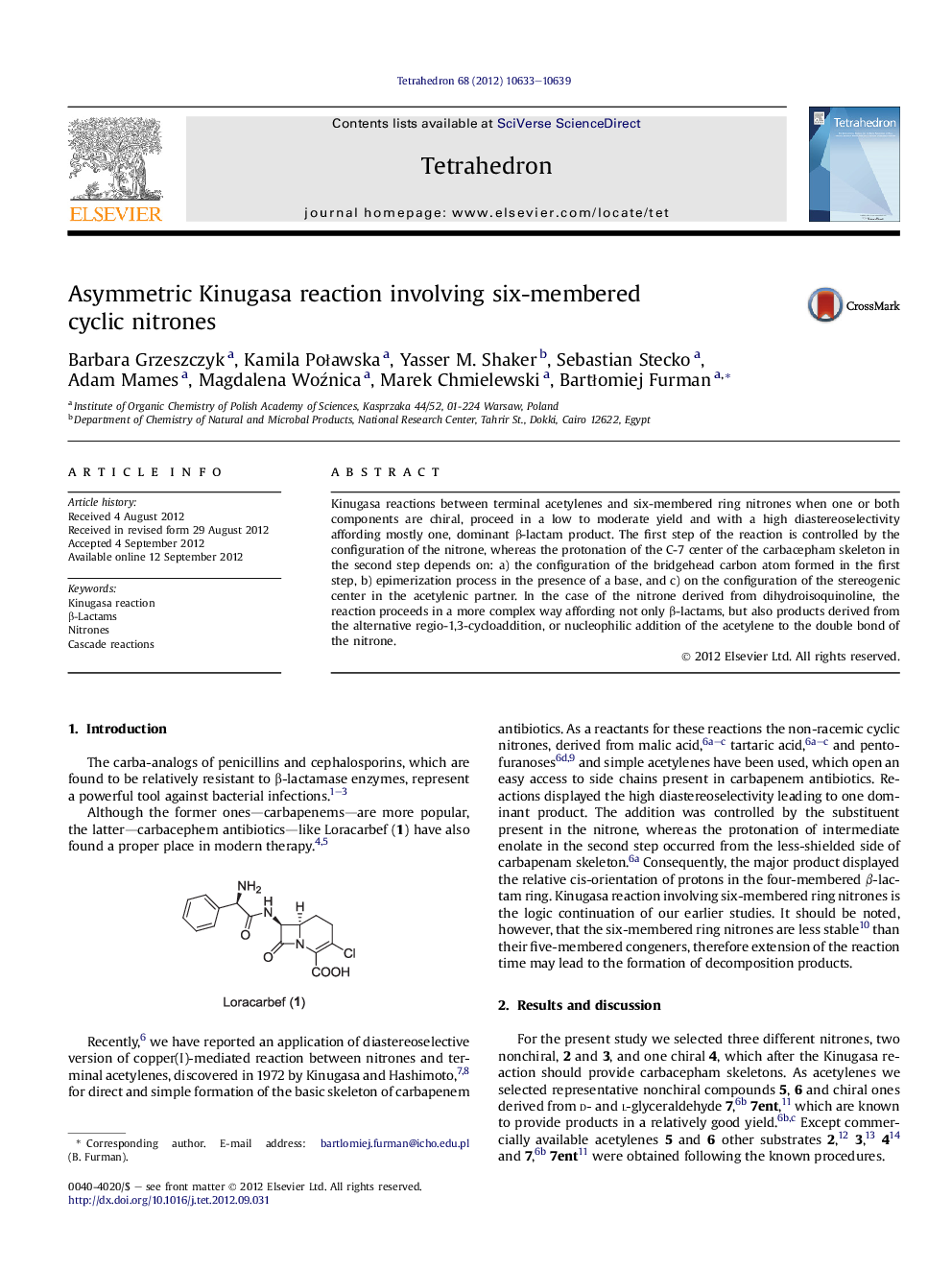| Article ID | Journal | Published Year | Pages | File Type |
|---|---|---|---|---|
| 5218829 | Tetrahedron | 2012 | 7 Pages |
Kinugasa reactions between terminal acetylenes and six-membered ring nitrones when one or both components are chiral, proceed in a low to moderate yield and with a high diastereoselectivity affording mostly one, dominant β-lactam product. The first step of the reaction is controlled by the configuration of the nitrone, whereas the protonation of the C-7 center of the carbacepham skeleton in the second step depends on: a) the configuration of the bridgehead carbon atom formed in the first step, b) epimerization process in the presence of a base, and c) on the configuration of the stereogenic center in the acetylenic partner. In the case of the nitrone derived from dihydroisoquinoline, the reaction proceeds in a more complex way affording not only β-lactams, but also products derived from the alternative regio-1,3-cycloaddition, or nucleophilic addition of the acetylene to the double bond of the nitrone.
Graphical abstractFigure optionsDownload full-size imageDownload as PowerPoint slide
